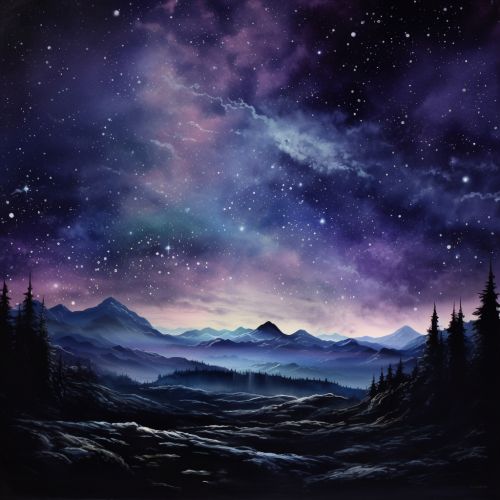Astrochemical Pathways to Complex Organic Molecules
Introduction
Astrochemistry, the study of chemical processes in astronomical environments, has led to the discovery of complex organic molecules (COMs) in various regions of the universe. These molecules, composed of carbon, hydrogen, oxygen, and other elements, are thought to be the precursors to life as we know it. This article will delve into the astrochemical pathways that lead to the formation of these COMs, exploring the processes that occur in the interstellar medium (ISM), within molecular clouds, and around protostars.


Astrochemistry and the Interstellar Medium
Astrochemistry is primarily concerned with the chemical reactions that occur in the ISM, a term that refers to the matter and radiation that exists in the space between the star systems in a galaxy. The ISM is composed of gas (primarily hydrogen), dust, and cosmic rays, and it is in this environment that the initial steps towards the formation of COMs take place.
The ISM is not a uniform environment; it contains regions of varying densities and temperatures, each with its own unique chemical characteristics. The densest regions of the ISM are known as molecular clouds, and it is within these clouds that the majority of the ISM's complex organic molecules are formed.
Molecular Clouds and the Formation of COMs
Molecular clouds, also known as stellar nurseries, are regions of the ISM where the density and temperature conditions allow for the formation of molecules. These clouds are primarily composed of molecular hydrogen (H2), but they also contain a variety of other molecules, including COMs.
The formation of COMs in molecular clouds begins with the formation of simple molecules, such as carbon monoxide (CO) and water (H2O). These molecules are formed through a variety of processes, including gas-phase reactions, surface reactions on dust grains, and the dissociation and recombination of ions.
Once these simple molecules are formed, they can undergo further reactions to form more complex molecules. For example, methanol (CH3OH) can be formed from the reaction of CO with a hydrogen atom on the surface of a dust grain. This methanol can then undergo further reactions to form even more complex molecules, such as ethanol (C2H5OH) and glycolaldehyde (C2H4O2).
Protoplanetary Disks and the Delivery of COMs to Planets
Protoplanetary disks, the rotating disks of gas and dust that surround newly formed stars, are another important site for the formation and delivery of COMs. These disks are thought to be the birthplaces of planets, and the COMs within them can be incorporated into the forming planetary bodies.
The processes that lead to the formation of COMs in protoplanetary disks are similar to those that occur in molecular clouds. However, the higher temperatures and densities in these disks can lead to the formation of different types of COMs. For example, the high temperatures can cause the thermal desorption of molecules from dust grains, leading to a higher concentration of gas-phase molecules. These molecules can then undergo gas-phase reactions to form COMs.
Once the COMs are formed, they can be incorporated into the forming planets through a process known as accretion. This process involves the growth of a planetary body by the accumulation of surrounding matter, including COMs. This is thought to be one of the ways in which the building blocks of life are delivered to planets.
Conclusion
The astrochemical pathways to complex organic molecules are a fascinating and complex area of study. From the initial formation of simple molecules in the ISM, to the complex reactions that occur in molecular clouds and protoplanetary disks, these pathways provide a glimpse into the processes that may have led to the origin of life in the universe.
